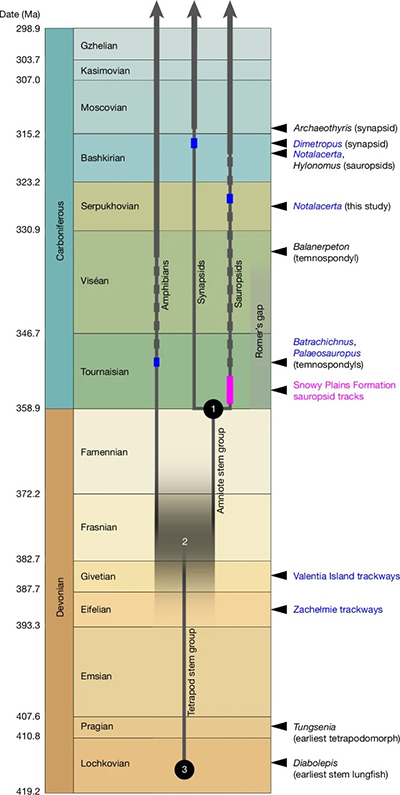Research Highlight - Ancient Footprints Push Back Origin of Amniotes by 40 Million Years
A groundbreaking discovery in Australia has rewritten the timeline of early tetrapod evolution,revealing that the first reptiles and their relatives emerged far earlier than previously believed. Published in Nature, the study describes 359-million-year-old fossil footprints from Victoria’s Snowy Plains Formation—the oldest evidence of clawed,amniote-like animals ever found.
The tracks,preserved on a sandstone slab along the Broken River,were made by a pentadactyl (five-toed) creature with sharp,laterally deflected claws—a hallmark of crown-group amniotes,the lineage that gave rise to reptiles, birds, and mammals. Dated to the early Tournaisian (just after the Devonian-Carboniferous boundary), these prints predate the oldest known amniote body fossils (Hylonomus) and earlier tracks (Notalacerta) by 35–40 million years.
"This discovery forces us to recalibrate the entire evolutionary timeline of tetrapods,"said lead author Per Ahlberg of Uppsala University."The amniote crown group must have originated in the Devonian,not the Carboniferous as we once thought."

Fig: Revised timescale of early tetrapod evolution.
Reference
Long,J.A., Niedźwiedzki, G.,Garvey, J. et al. Earliest amniote tracks recalibrate the timeline of tetrapod evolution. Nature (2025). https://doi.org/10.1038/s41586-025-08884-5
File Download: